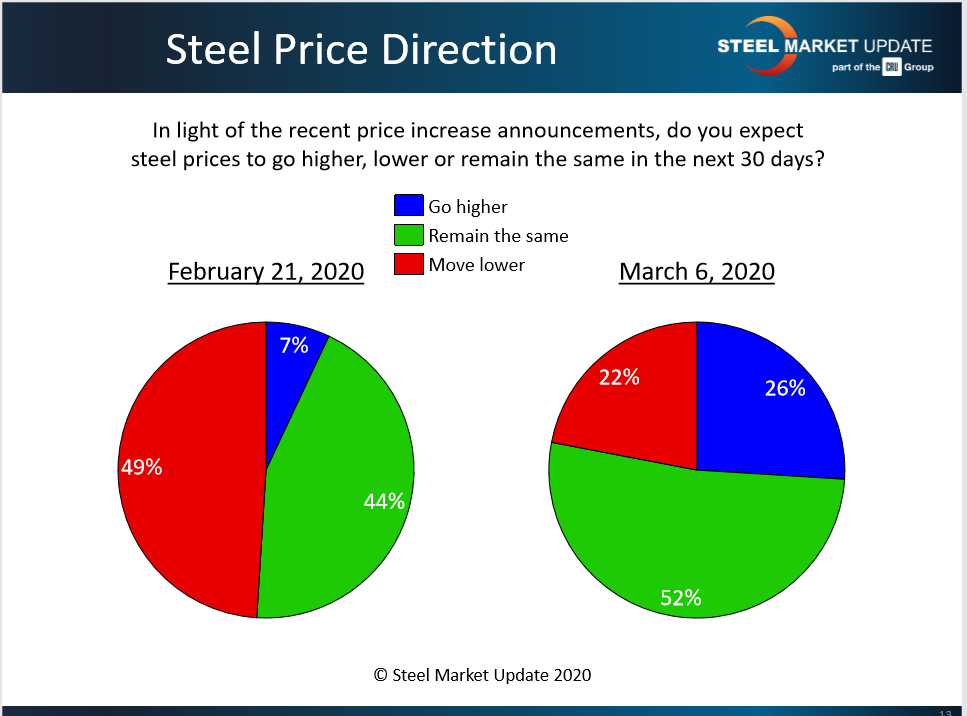SMU Data and Models

SMU Market Trends: Few Expect Higher Prices
Written by Tim Triplett
March 8, 2020
Last week’s price hike by the mills did little to change the outlook of most steel buyers. The majority (52 percent) of those responding to Steel Market Update’s canvass of the market this past week still believe prices will remain the same, despite the latest $40 increase announced by the mills on Feb. 27. Another 22 percent expect prices to move even lower in the next 30 days, while just 26 percent anticipate higher prices.

The benchmark price for hot rolled moved up by $20 to $580 per ton, based on SMU’s latest poll of steel buyers a few days after the mills’ announcement. Whether that was a short-term reaction or a signal that prices are changing direction remains to be seen. Most respondents’ comments are skeptical. Coronavirus fears are the wildcard:
“The increase was an attempt to keep pricing stable, but I don’t think it’s going to work this time.”
“HRC will move higher in the short term based on relines, maintenance, etc., but I don’t think it’s sustainable.”
“I see maybe a slight upward bias, but nothing significant.”
“The most recent announcement was to stop the fall. As long as scrap remains constant, and demand seems OK, there should be no significant movement.”
“With roughly 500,000 tons of hot roll being taken out of the market in April/May due to the plethora of planned outages, and scrap trending up, we feel pricing for hot roll will move slightly higher. Even more so for coated products.”
“If demand is affected by coronavirus fears, prices will come down.”
“I could see prices going up a bit based on scrap prices, but I don’t see them climbing too much higher or dropping too much lower with all the uncertainty over the coronavirus and demand.”
“Prices could go flat and not drop more. There are too many uncertainties to know for sure. If demand softens in the short term, the price will start flat but then keep going down.”

Tim Triplett
Read more from Tim TriplettLatest in SMU Data and Models

SMU’s June at a glance
A look at SMU data for the month of June.

SMU Survey: Buyers’ Sentiment rebounds from multi-year low
Both of SMU’s Steel Buyers’ Sentiment Indices edged higher this week. Current Sentiment rebounded from a near five-year low, while Future Sentiment rose to a two-month high

SMU flat-rolled market survey results now available
SMU’s latest steel buyers market survey results are now available on our website to all premium members.

SMU Survey: Sheet lead times pull back after early-June blip, plate holds
Following the uptick seen two weeks ago, lead times eased this week for all four sheet products tracked by SMU, while plate lead times held steady, according to this week’s market survey.

SMU Survey: Pricing power abruptly shifts to steel buyers
The majority of steel buyers responding to our latest market survey say domestic mills are more willing to talk price on sheet and plate products than they were earlier this month. Sheet negotiation rates rebounded across the board compared to early June, while our plate negotiation rate hit a full 100%.
